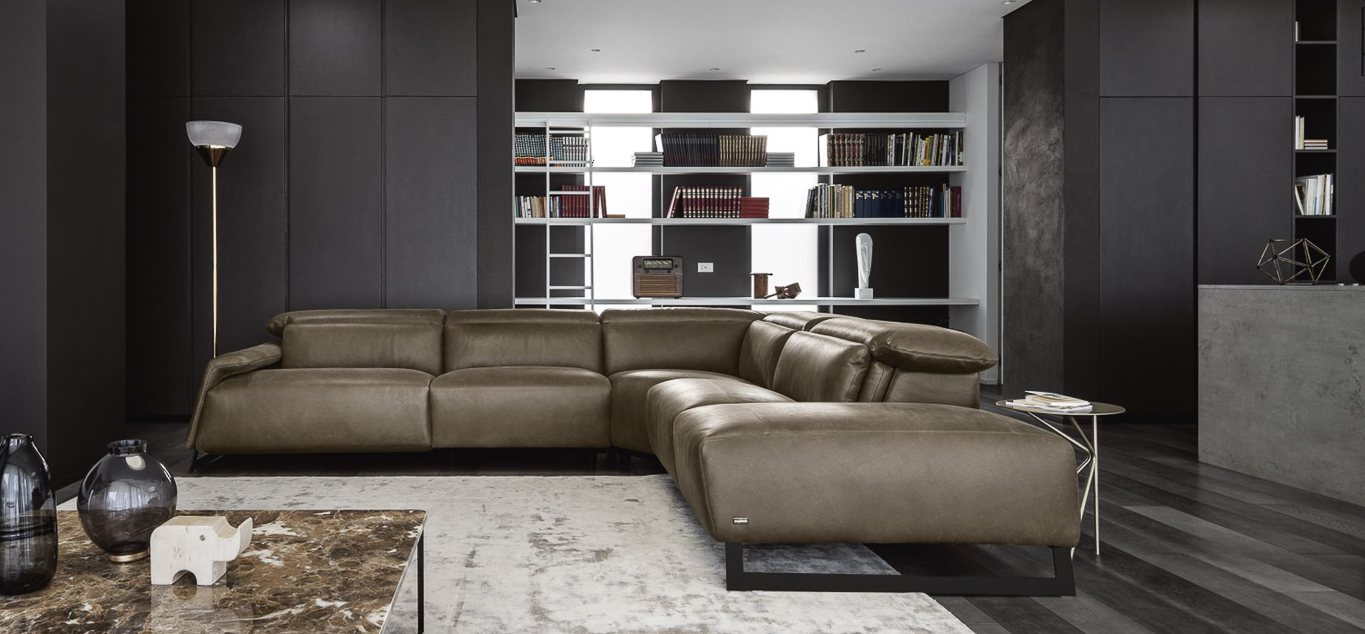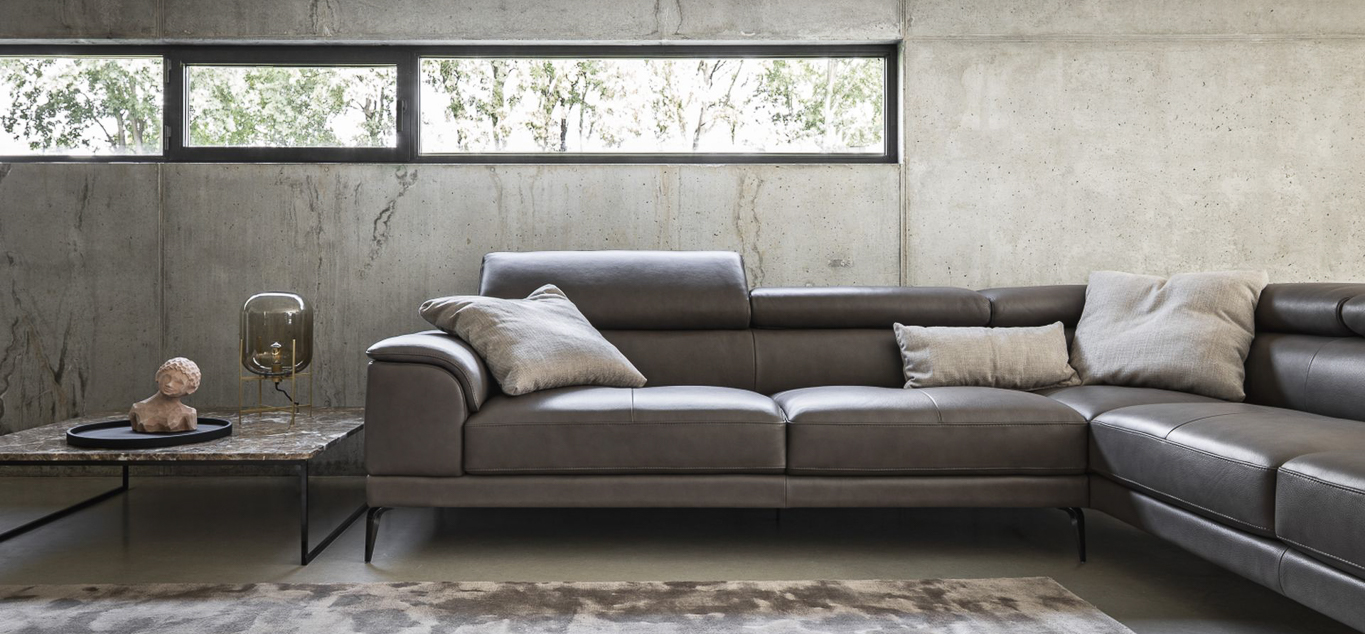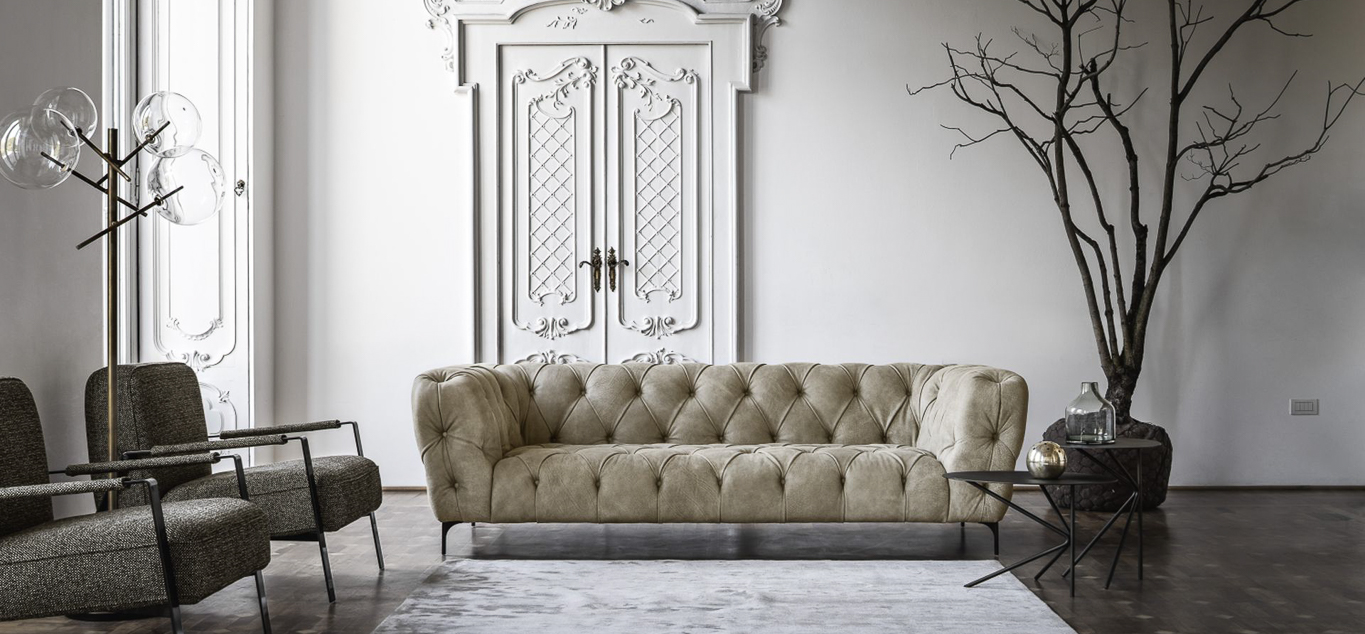Leather is one of the most elegant materials that designers can use for furniture and apparel. The look, texture, and robustness of leather make it desirable for high-end products like sofas. Additionally, genuine high quality leathers are more durable than most upholstery materials.
Therefore, if you are going for high-end leather furniture, it’s necessary to know the different types of premium quality leather we use and how to care for it.
How to Clean Leather Furniture
Upholstery leather comes in various types depending on how the hide is cut and finished. Generally, furniture leather comes from bovine animals like cows. However, manufacturers also use leather from other animals like goats and sheep.
High-end brands usually source their leather from European producers who keep cows in a controlled environment. Here are the types of leathers we use for our Italian luxury sofas and how to clean them.

Full Grain Leather
Full-grain is the highest quality of leather used for furniture. During the tanning process, the animal hide passes through a splitting machine that separates it into two layers. The upper portion (dermis or papillary segment) is what manufacturers use to produce full-grain and top-grain leather.
However, the difference between full-grain and top-grain is that full-grain is usually not buffed and sanded. Therefore, any blemishes on the hide, like scratches and scars, will show on the finished product, giving it character and authenticity.
Additionally, since the leather is unfinished, it retains most of its natural oils, texture, and thickness. Thus, it develops a patina that gives it a rich and elegant aesthetic over time.
How to Clean Full Grain Leather
Full-grain leather is often treated with aniline dyes to give it different color variations. However, since the leather remains porous, it is prone to liquid stains.
Therefore, we recommend vacuuming and dusting it regularly with a clean, dry cloth and wiping it down with a full-grain leather cleaner. If you pour something on your leather sofa, dab it off quickly with a soft cloth and allow it to air dry.
Treat the leather with an aniline protector or protective cream often to prevent stains. Also, use a leather conditioner to keep the texture soft and supple.
Top Grain
Top grain leathers also come from the dermis portion of the hide. Therefore it is high-quality, and we have a wide selection available in our Nicoline Singapore store. They include; Nevada, a semi-aniline leather; Nobile, an embossed variety and Royal, a corrected grain leather available in several bold colors.
Unlike full-grain leather, which is left unfinished, top-grain leather is sanded and buffed to achieve a smooth and flawless finish with consistent color. Also, the leather is typically treated with a protective coating to prevent abrasions and stains.
How to Clean Top Grain Leather
Top-grain leather has a consistent color because the surface is smooth and absorbs dye evenly. However, both varieties stain easily, and therefore it is necessary to dab off spills as soon as they occur.
We recommend vacuuming or wiping down with a soft dry cloth to prevent dirt and dust from sticking to the material. Plus, apply a stain-resistance treatment regularly to protect it.

Nubuck
Nubuck leather is top-grain leather lightly sanded on the grain surface to create a velvety finish. It has a light nap on the surface, giving it a luxurious hand feel. On the other hand, the surface is highly absorbent because it is natural and prone to liquid stains and abrasions.
Nubuck is never polished due to its texture but is protected with a coating to prevent stains. Therefore, it develops a patina over time, like full-grain leather, making it attractive for high-end furniture. Our Nubuck leather coverings include Colorado, Nabuk, and Arizona collections.
How to Clean Nubuck Leather
Nubuck is prone to water stains as it is highly absorbent. Thus, spillage should be dabbed off quickly with a clean cloth to prevent it from getting absorbed. Use a little lukewarm water to dab if it is a stubborn stain. For oil and grease spills, use a clean white cloth to wipe and a dry cleaning pad or pencil eraser to remove dry stains.
Nubuck also collects a lot of dust due to its texture, so we recommend brushing your luxury sofa with a soft brush and vacuuming regularly. Look for a cleaning brush made with materials like goat, camel and sable hair, or nylon.
Aniline Leather
This is any premium quality leather treated with an aniline dye. Aniline is a soluble dye that colors the leather while retaining the leather’s natural characteristics. Thus, only high-quality leathers with minimal scars and other blemishes are aniline dyed.
How to Clean Aniline Leather
Aniline leather is prone to getting stains from water, oil, and other liquid spills as the surface is highly porous. Therefore, dab off any spills immediately after they occur and wipe the sofa often with an aniline cleaner to remove oil and dirt. Additionally, aniline leather does not have a protective coating. So, we recommend treating it with an aniline protector every three months to prevent stains.
Regular dusting with a clean cloth or vacuum will help to reduce dirt stains. Aniline leather fades with extended exposure to sunlight and needs conditioning to prevent it from drying out.
Semi-Aniline Leather
Semi-aniline leather is aniline leather with a thin layer of protective color coating on the surface. The coating makes the leather more resistant to stains and gives it more color consistency than aniline leather. However, the leather retains its natural character, and its blemishes are visible.
Plus, it is easier to clean and maintain as the protective layer prevents stains and abrasions from the surface. However, the coating makes it less breathable, and the leather will not have a patina as it ages.
How to Clean Semi-Aniline Leather
The protective layer on semi-aniline leather allows you to use water-based cleaners to wipe down the sofa. After cleaning, wipe again with a clean, dry cloth and let the seat air dry. Alternatively, you can wipe the leather with a slightly damp cloth and mild soap. Avoid tap water because the minerals in the water can stain your leather. We recommend using distilled water or rainwater instead.

How to Care for Leather Furniture
Besides regular cleaning, leather furniture also requires good care to keep it looking beautiful and fresh. Here are some tips on how to care for your luxury leather sofa.
- Homemade solutions, harsh soaps, solvents, and water will do more damage to your leather sofa than the stain itself. Instead, use a recommended leather cleaner for your sofa to keep the surface in good condition.
- Always blot out spills immediately with a dry or slightly damp cloth and leave the spot to air dry. Avoid wiping or rubbing the stain as it will spread on the seat.
- Also, never use an air dryer on your leather seat, as heat can damage it.
- Blot out excess oils and grease spills with a clean, white dry cloth. The stain will get absorbed into the leather over time.
- Apply a cloth or sponge slightly damped with lukewarm distilled water and mild soap for stubborn stains. Afterward, blot it with a clean, dry cloth and let the leather dry naturally.
- Leather is porous and absorbs dyes, liquids, and inks. Therefore, avoid leaving spills on the seat for a long time, as the liquid stain will be difficult to clean.
- Watch out for sharp objects that may scratch your sofa. You can fix minor scratches by buffing them gently with your fingers or with a clean chamois.
- To keep your leather soft and supple, we recommend using a good leather conditioner every six to twelve months after cleaning.
- Leather fades with prolonged exposure to sunlight, so avoid keeping your furniture where there is direct sunlight.
Conclusion
While leather is one of the most durable upholstery materials, it needs a little more care to keep it in good condition. Regular dusting and vacuuming keeps dirt off your luxury sofas and applying leather conditioners helps leather maintain its suppleness.
Additionally, genuine leather is highly absorbent. Thus, we recommend dabbing off spills as soon as they occur to prevent stains. Ultimately, leather furniture is one of the best long-term investments one can make. Therefore, it is necessary to ensure that it pays off with good maintenance.